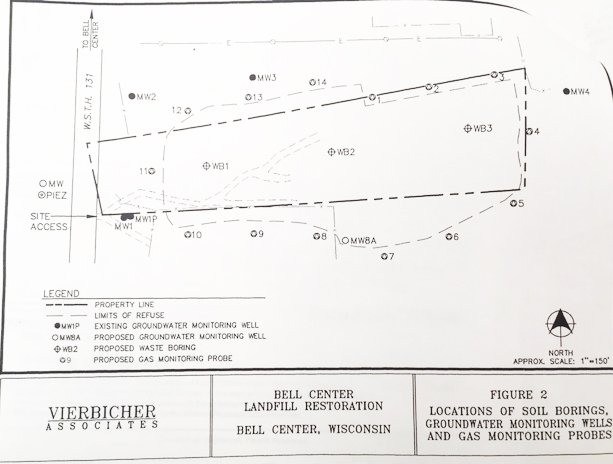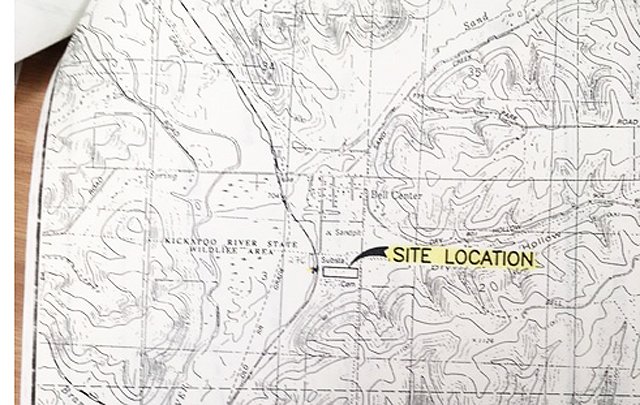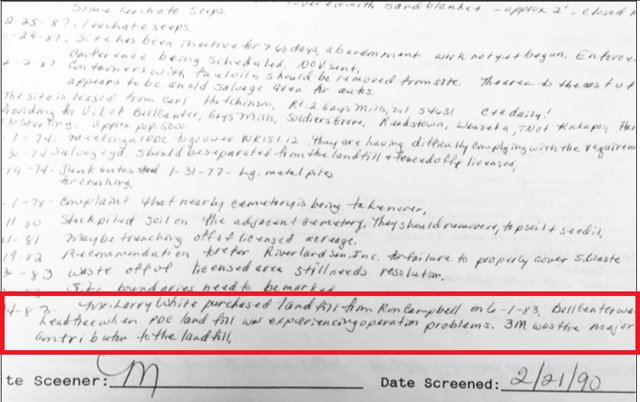BELL CENTER - Governor Tony Evers and Wisconsin Attorney General Josh Kaul announced on July 20 that they have filed a lawsuit against three Wisconsin manufacturers and 15 other defendants for “wrongful, deceptive, and tortious conduct” that led directly to PFAS contamination of Wisconsin’s water, property, and natural resources. Parties named in the suit include Tyco Fire Products, Chemguard, 3M, DuPont, and others
The complaint, authorized by Governor Evers and filed in Dane County by the Attorney General Kaul and Wisconsin Department of Justice, alleges the defendants knew or should have known that the ordinary and intended use of their products would lead to the dangerous impacts on public health and the environment now being experienced across Wisconsin. State taxpayers are currently facing enormous costs to address PFAS contamination, costs the lawsuit alleges should be borne by those responsible for their presence throughout the state.
NRB’s failure to act
This effort has been stimulated by the widespread nature of PFAS contamination throughout the State of Wisconsin, the need for funding to help remediate the problems, and the failure of the Natural Resources Board (NRB) to set a health standard for PFAS in groundwater in the state.
At a contentious meeting on February 23, the NRB adopted a standard of 70 parts-per-trillion (ppt) for drinking water from municipal water systems. For surface waters, the levels set are 8 ppt for PFOS, and 20 ppt for PFOA in public water supply waters, and 95 ppt in non-public water supply areas. In all cases, Wisconsin Department of Health Services (DNR) recommended a standard of 20 ppt.
While standards were set for municipal water supplies, and surface water, the failure to set a groundwater standard leaves rural citizens who rely on water from private wells with no recourse.
The NRB voted down a standard for groundwater/well water of 20 ppt, led by Frederick Prehn, a Wausau dentist and holdout on the NRB, appointed by the Scott Walker administration. The Supreme Court of Wisconsin recently handed down a decision that Prehn could hold out in his position after expiration of his term until the legislature confirmed a new appointment by Governor Evers, which the legislature has declined to do.
Renewed effort
Since that time, on July 1, 2022, environmental and public health groups represented by Midwest Environmental Advocates (MEA) petitioned the Wisconsin Department of Natural Resources (DNR) to list toxic PFAS chemicals as contaminants under Wisconsin’s Groundwater Law. The petition was filed by MEA on behalf of S.O.H2O and the League of Women Voters of Wisconsin.
“PFAS contamination in our groundwater is an urgent problem that requires immediate action,” said Doug Oitzinger, a Marinette resident and a member of S.O.H2O. “This petition gives state officials an opportunity to move quickly to protect public health.”
Filing a petition is the first step in restarting the process of developing enforceable standards for PFAS in groundwater.
Also, since that time, the U.S. Environmental Protection Agency (EPA) has sharply revised their non-enforceable PFAS health advisory levels to 0.004 ppt for PFOA, 0.02 ppt for PFOS, 10 ppt for GenX chemicals, and 2,000 ppt for PFBS. The PFOA and PFOS health advisory standards are well below former 70 ppt levels.
Communities struggling
Many communities that have undertaken testing have identified alarming levels of PFAS in both municipal and private wells. Two areas where private wells have been found to be widely contaminated above a safe level are in the Village of Campbell and LaCrosse Township in LaCrosse County, as well as in the Peshtigo and Marinette areas in northeast Wisconsin.
In the Marinette and Peshtigo areas, of 168 wells sampled, 16 exceeded 70 ppt, 29 exceeded 20 ppt, and 110 showed no evidence of contamination.
In the Town of Campbell and French Island, of the total 166 private wells sampled by the City of LaCrosse, 55 exceeded 20 ppt and 13 exceeded the DHS PFAS Hazard Index, and one showed no PFAS. Of the 167 wells privately sampled by the well owners, 61 exceeded 20 ppt, four exceeded the DHS PFAS Hazard Index, and one showed no PFAS. Of the 200 wells sampled by DNR, 22 exceeded 20 ppt, nine exceeded the DHS PFAS Hazard Index, and 10 showed no PFAS. Of the 20 municipal wells sampled, two exceeded 20 ppt, and one showed no PFAS.



Bell Center Landfill
It may be that issues with contamination of groundwater, and possibly surface water and fish, can be found even closer to home. A municipal landfill, in a sand terrace just uphill from the lower Kickapoo River, was operated in Bell Center from 1970-1986.
According to a letter, signed by 65 residents of Bell Center, published in the Independent-Scout in November of 1987, the landfill accepted not only municipal waste, but also waste from “all over Southwest Wisconsin” and industrial waste from the 3M corporation.
The text of the letter read:
“The Bell Center landfill site is comprised entirely of sand and, having no clay base, is now recognized as being unsuitable for use as a sanitary landfill. Under the operation of Lead-free Enterprises, this site served as a receptacle for much of southwestern Wisconsin, a use for which it was never intended. The site also served industrial needs, a purpose for which it was never intended.”
Local resident Trent Mills, recalls as a child seeing the industrial waste from the 3M company at the site:
“As a kid, I recall playing on bales of Thinsulate/Scotchbrite the size of hay bales, all lined up and simply interred in what was otherwise a sandpit,” Mills said. “Birds stuck in melted, oozing resin ingots of 3M waste, fluttering to escape, but doomed.”
Wisconsin Department of Natural Resources (WDNR) Waste and Materials Management Program Hydrogeologist Carolyn Cooper said she is reviewing WDNR’s files on the site to determine exactly what 3M industrial wastes were disposed of there.
“The files I have seen so far only state that the site primarily accepted residential waste, but industrial wastes from 3M were known to have been disposed of at the landfill,” Cooper said. “I have not found information on volumes, materials disposed, or dates. This type of information is rare for older sites, when waste tracking was not required.”



A note found in Wisconsin Department of Natural Resources (WDNR) files about the abandoned landfill, dated February 21, 1990, and signed by a site screener as ‘M,’ indicated that “3M was the major contributor to the landfill.”
Specifically, information provided to the Wisconsin Natural Resources Board (NRB) by the Wisconsin Department of Health Ser-vices, indicates that water repellent clothing, like items manufactured using Thinsulate, can be a source of PFAS and a method of exposure that can result in harmful human health impacts.
PFAS can also enter sur-face waters, and result in contamination of fish in a polluted reach of stream. Recently, WDNR’s announcement of a fish consumption advisory for Black Earth Creek, due to PFAS contamination sent shock-waves. Black Earth Creek is a world class trout stream. Sand Creek in Bell Center is rated by WDNR as a Class I trout stream.
The sloughs along the Kickapoo River Bottoms across from the landfill are part of WDNR’s ‘Kickapoo Wildlife Area Bell Center Unit. The 1,550-acre property is located within the Lower Kickapoo Conservation Opportunity Area in Wisconsin’s Wildlife Action Plan, and is considered to be “of continental significance for its Driftless Area features, and an important bird area.
According to Armund Bartz, Driftless Area Ecologist-Natural Heritage Conservation with WDNR, the general area of Sand Creek and Bell Center Unit of the Kickapoo River Valley is home to 16 ‘element occurrences’ for rare to uncommon plants, animals, and natural communities. This includes five rare to uncommon plants, 10 rare to uncommon animals, and one natural community of dry prairie.


According to records from WDNR monitoring of the site has documented that the path of flow of groundwater under the site is moving to the north and west. The Village of Bell Center, Sand Creek, as well as backwater sloughs of the Kickapoo River are to the north and west.
Ownership and leases
The Bell Center Landfill came to be a State of Wisconsin property after a series of legal maneuvers and court cases involving the Wisconsin Department of Justice left them holding the property. First, Lead Free Enterprises of Waukon, Iowa declared bankruptcy.
Then the owner Ann Hutchison changed her last will and testament on July 22, 1977 so that “any individual person may disclaim any portion including any particular item and any particular portion of real estate, or all of any gift made to such person by my said Will. If any person disclaims as aforesaid, all such disclaimed property shall pass as provided under Chapter 852 of the Wisconsin Statutes (as such Statutes existed on the date of this Codicil) as if I died with no spouse, no issue, no parent, no issue of a parent, no grandparent and no next of kin (that is, as if I died with no heirs so that such property shall escheat to the State of Wisconsin). In no event shall any disclaimed property ever pass to any heir of mine.”
Eventually, in complicated legal maneuverings by the Wisconsin Department of Justice, after a review of the assets of all parties involved, it was agreed that the ownership of the land was to be transferred back to Ann Hutchison, and then to the State of Wisconsin.
The original permit for the landfill was granted to Rodney Campbell for a Sanitary Landfill. The document is handwritten, and signed by Mrs. Violet Kelly, clerk, and Seth Kelly, president, on June 8, 1970.
The original lease for the landfill was entered into between Carl and Ann Hutchison and Rodney Campbell of the Kickapoo Sanitation Service of Soldiers Grove. The original lease was granted for five years from July 1970 to June 30, 1975, with a yearly rent of $500. The business was eventually sold to Larry White of Lead Free Enterprises, who continued to deposit waste into the Bell Center facility, another landfill in Bridgeport owned by the Dahmen family, and numerous sites in northeast Iowa. This included 3M industrial waste in Bell Center, and maybe beyond.
WDNR remediation
According to WDNR’s Cooper, the agency installed a ‘properly designed cap’ on the landfill, composed of clay, which was seeded for revegetation. That clean up effort began in 1995, about eight years after the site ceased operations. WDNR also implemented ‘erosion control measures,’ and fencing around the site.
“A properly designed cap (which meets the requirements in NR 500) has two feet of compacted clay over the waste, with at least six inches of topsoil and vegetation on top of the clay,” Cooper explained. The state-funded cleanup cost approximately $900,000.
Monitoring results
According to Cooper, “after initial monitoring showed some volatile organic chemicals (VOC) contamination in the monitoring wells required for the owner, Lead-free Enterprises, of Waukon, Iowa declared bankruptcy, and walked away, leaving unfiled reports and unpaid fines.
Monitoring wells were installed by WDNR in 1988, and gas probes in 2004. According to Cooper, the wells were monitored from 1988 to 2005, with the primary concern being ‘volatile organic chemicals (VOC).’ The wells were permanently abandoned in 2005.
“VOCs are commonly found in landfills that accepted municipal solid waste, like this landfill did, and they were the primary contaminants of concern [at the time] at the site,” Cooper explained. “In the last samples collected from the wells in 2005, low levels (just above the detection limit) of VOCs were detected in only one of the seven monitoring wells.”
Cooper said that files of the site show no history of any monitoring or testing of the site for PFAS. She also said that she is not aware of any testing of fish from Sand Creek or the Lower Kickapoo River to test for the presence of PFAS in fish tissue.
Historically, according to a WDNR employee, sampling of the blood of eagle chicks in the area, prior to cessation of the program in the Walker administration, tested for the presence of PFAS.
Current options
In correspondence with Dan Baumann, WDNR Secretary’s Director for the Western District of Wisconsin had this to say:
“Thank you for reaching out. I’ve connected with the various programs within WDNR that may have jurisdiction over this matter and, while the department shares your concerns, unfortunately WDNR has neither the authority to require sampling under these circumstances, nor the funding to conduct sampling,” Baumann explained. “The county health department may be able to provide assistance through a partnership with the State Health Department, or working with local government officials, local residents may be able to secure funding.”
Baumann went on to say:
“If residents would like to sample private wells on their own, here is a link, https://dnr.wisconsin.gov/topic/PFAS/Labs.html to a DNR website that provides a list of laboratories certified by the state of Wisconsin to analyze for PFAS,” Baumann shared. “We would be happy to assist with the evaluation of any information that is obtained.”




